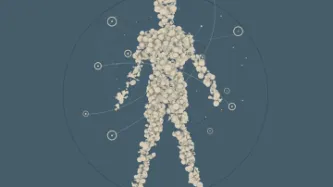Advanced Search
Content Type: Examples
Recruiters are beginning to incorporate emotional recognition technology into the processes they use for assessing video-based job applications. Human, a London-based start-up, claims its algorithms can match the subliminal facial expressions of prospective candidates to personality traits. It then scores the results against characteristics the recruiter specifies. HireVue, which sells its service to Unilever, uses the emotion database of Affectiva, a specialist in emotion recognition that…
Content Type: Examples
In 2018, pending agreement from its Institutional Review Board, the University of St Thomas in Minnesota will trial sentiment analysis software in the classroom in order to test the software, which relies on analysing the expressions on students' faces captured by a high-resolution webcam. Instructors will be able to see the aggregate detected emotions of up to 42 students displayed in a glance at their computer screen. The project hopes to help teachers adapt their approaches in response, but…
Content Type: Examples
In a report on mobile security updates, the US Federal Trade Commission finds that because of the complexity of the mobile ecosystem applying security updates to operating system software on some mobile devices is time-consuming and complicated. Based on information gathered from eight device manufacturers - Apple, Blackberry, Google, HTC, LG, Microsoft, Motorola, and Samsung, the FTC recommends that manufacturers should deploy these updates more quickly and suggests that manufacturers should…
Content Type: Examples
In February 2018 the Canadian government announced a three-month pilot partnership with the artificial intelligence company Advanced Symbolics to monitor social media posts with a view to predicting rises in regional suicide risk. Advanced Symbolics will look for trends by analysing posts from 160,000 social media accounts; the results are intended to aid the Canadian government in allocating mental health resources. The company claims to be able to predict suicidal ideation, behaviours, and…
Content Type: Examples
In 2014, the UK suicide prevention group The Samaritans launched Radar, a Twitter-based service intended to leverage the social graph to identify people showing signs of suicidal intent on social media and alert their friends to reach out to offer them help. The app was quickly taken offline after widespread criticism and an online petition asking them to delete the app. Among the complaints: the high error rate, intrusiveness, and the Samaritans' response, which was to suggest that people…
Content Type: Examples
"To the 53 people who’ve watched A Christmas Prince every day for the past 18 days: Who hurt you?" Netflix tweeted in December 2017. While the tweet did not contain any information that could have identified any of the 53 people, it still made many of those who saw it uncomfortable. A Christmas Prince was a new movie released by Netflix, and the statistic is apparently derived from the service's detailed collection of data on what its subscribers watch.
Subscribers are generally aware that the…
Content Type: Examples
Websites have long used third-party analytics scripts to collect information about how visitors use their sites. In November 2017, researchers at Princeton found that an increasing number of sites use "session replay" scripts that collect every action the user performs while on the site, including mouse movements, keystrokes, scrolling behaviour, and the complete contents of pages loaded. Users logically expect the sites to receive typed data only after they're pressed the "submit" button, but…
Content Type: Examples
In 2017, after protests from children's health and privacy advocates, Mattel cancelled its planned child-focused "Aristotle" smart hub. Aristotle was designed to adapt to and learn about the child as they grew while controlling devices from night lights to homework aids. However, Aristotle was only one of many tech devices being released onto the market to take over functions that have traditionally been part of the intimate relationship between children and their parents: a smart cradle that…
Content Type: Examples
In 2016 reports surfaced that bricks-and-mortar retailers were beginning to adopt physical-world analogues to the tracking techniques long used by their online counterparts. In a report, Computer Sciences Corporation claimed that about 30% of retailers were tracking customers in-store via facial recognition and cameras such as Intel's RealSense cameras, which can analyse facial expressions and identify the clothing brands a customer is wearing. Intel noted that the purpose was to build general…
Content Type: Examples
Caucuses, which are used in some US states as a method of voting in presidential primaries, rely on voters indicating their support for a particulate candidate by travelling to the caucus location. In a 2016 Marketplace radio interview, Tom Phillips, the CEO of Dstillery, a big data intelligence company, said that his company had collected mobile device IDs at the location for each of the political party causes during the Iowa primaries. Dstillery paired caucus-goers with their online…
Content Type: Examples
In a presentation given at the Knowledge Discovery and Data Mining conference in 2016, researchers discussed a method of using the data generated by smart card public transport tickets to catch pickpockets. In a study of 6 million passenger movements in Beijing, the researchers used a classifier to pick out anomalous journeys - sudden variations in the patterns of ordinary travellers or routes that made no sense. A second classifier primed with information derived from police reports and social…
Content Type: Examples
As part of its Smart Nation programme, in 2016 Singapore launched the most extensive collection of data on everyday living ever attempted in a city. The programme involved deploying myriad sensors and cameras across the city-state to comprehensively monitor people, places, and things, including all locally registered vehicles. The platform into which all this data will be fed, Virtual Singapore, will give the government the ability to watch the country's functioning in real time. The government…
Content Type: Examples
In 2015, the Royal Parks conducted a covert study of visitors to London's Hyde Park using anonymised mobile phone signals provided by the network operator EE to analyse footfall. During the study, which was conducted via government-funded Future Cities Catapult, the Royal Parks also had access to aggregated age and gender data, creating a detailed picture of how different people used the park over the period of about a year. The study also showed the percentage of EE subscribers who visited…
Content Type: Examples
By 2016, a logical direction for data-driven personalisation efforts to go was toward the "Internet of Emotions": equipping devices with facial, vocal, and biometric sensors that use affective computing to analyse and influence the feelings of device owners. Of particular concern is the potential for using subtle cues to manipulate people in a more nuanced way than is presently discussed. The beginnings of this are already visible in the example of an Amazon Echo that displayed the items a…
Content Type: Examples
Because banks often decline to give loans to those whose "thin" credit histories make it hard to assess the associated risk, in 2015 some financial technology startups began looking at the possibility of instead performing such assessments by using metadata collected by mobile phones or logged from internet activity. The algorithm under development by Brown University economist Daniel Björkegren for the credit-scoring company Enterpreneurial Finance Lab was built by examining the phone records…
Content Type: Examples
In 2016, the American Civil Liberties Union of Northern California published a report revealing that the social media monitoring service Geofeedia had suggested it could help police track protesters. The report's publication led Twitter and Facebook to restrict Geofeedia's access to their bulk data. ACLUNC argued that even though the data is public, using it for police surveillance is an invasion of privacy. Police are not legally required to get a warrant before searching public data; however…
Content Type: Examples
At the Sixth Annual Conference on Social Media Within the Defence and Military Sector, held in London in 2016, senior military and intelligence officials made it clear that governments increasingly view social media as a tool for the Armed Forces and a "new front in warfare". Social media are also viewed as a source of intelligence on civilian populations and enemies and as a vector for propaganda. The conference was sponsored by Thales, which was working with the National Research Council of…
Content Type: Examples
In 2015, Boston advertising executive John Flynn, CEO of Copley Advertising, began developing a system that uses standard online advertising and tracking techniques, coupled with geofencing, to send advertisements to women's smartphones when they are sitting inside Planned Parenthood clinics and other abortion facilities. The system was soon adopted by the northern California-based crisis pregnancy centres network RealOptions and the evangelical adoption agency Bethany Christian Services. The…
Content Type: Examples
In 2016, researchers at MIT's Computer Science and Artificial Intelligence Laboratory developed a new device that uses wireless signals that measure heartbeats by bouncing off a person's body. The researchers claim that this system is 87% accurate in recognising joy, pleasure, sadness, or anger based on the heart rate after first measuring how the individual's body reacts in various emotional states. Unlike a medical electrocardiogram, it does not require a sensor to be attached to the person's…
Content Type: Examples
In 2016, the Big Data lab at the Chinese search engine company Baidu published a study of an algorithm it had developed that it claimed could predict crowd formation and suggested it could be used to warn authorities and individuals of public safety threats stemming from unusually large crowds. The study, which was inspired by a New Year's Eve 2014 stampede in Shanghai that killed more than 30 people, correlated aggregated data from Baidu Map route searches with the crowd density at the places…
Content Type: Examples
According to the US security firm Statfor the Chinese government has been builsing a system to analyse the massive amounts of data it has been collecting over the past years. The company claims: "The new grid management system aims to help the Chinese government act early to contain social unrest. Under the new program, grid administrators each monitor a number of households (sometimes as many as 200). They then aggregate their reports into one enormous surveillance database, where it is…
Content Type: Impact Case Study
What is the problem
Business models of lots of companies is based on data exploitation. Big Tech companies such Google, Amazon, Facebook; data brokers; online services; apps and many others collect, use and share huge amounts of data about us, frequently without our explicit consent of knowledge. Using implicit attributes of low-cost devices, their ‘free’ services or apps and other sources, they create unmatched tracking and targeting capabilities which are being used against us.
Why it is…
Content Type: Impact Case Study
What happenedStrong and effective data protection law is a necessary safeguard against industry and governments' quest to exploit our data. A once-in-a-generation moment arose to reform the global standard on data protection law when the European Union decided to create a new legal regime. PI had to fight to ensure it wasn't a moment where governments and industry would collude to reduce protections.In January 2012, the European Commission published a proposal to comprehensively reform the…

























